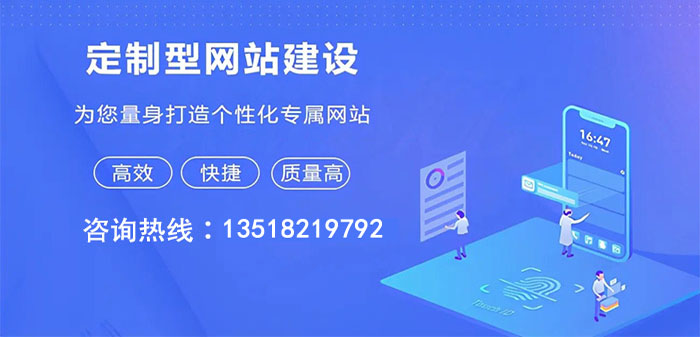扫二维码与项目经理沟通
我们在微信上24小时期待你的声音
解答本文疑问/技术咨询/运营咨询/技术建议/互联网交流
首先Spring AOP有两个重要的基础接口,Advisor和PointcutAdvisor,接口声明如下:

成都创新互联公司专注为客户提供全方位的互联网综合服务,包含不限于成都做网站、网站设计、永靖网络推广、小程序制作、永靖网络营销、永靖企业策划、永靖品牌公关、搜索引擎seo、人物专访、企业宣传片、企业代运营等,从售前售中售后,我们都将竭诚为您服务,您的肯定,是我们最大的嘉奖;成都创新互联公司为所有大学生创业者提供永靖建站搭建服务,24小时服务热线:18980820575,官方网址:www.cdcxhl.com
Advisor接口声明:
public interface Advisor {
Advice getAdvice();
boolean isPerInstance();
}
PointcutAdvisor的接口声明:
public interface PointcutAdvisor extends Advisor {
/**
* Get the Pointcut that drives this advisor.
*/
Pointcut getPointcut();
}
PointcutAdvisor用来获取一个切点以及这个切点的处理器(Advise)。
@Async注解使用后置处理器BeanPostProcessor的子类AsyncAnnotationBeanPostProcessor来实现bean处理 :
AsyncAnnotationAdvisor继承了PointcutAdvisor接口。并且在AsyncAnnotationBeanPostProcessor实现了其父类接口的BeanFactoryAware中的setBeanFactory初始化。Spring一旦创建beanFactory回调成功,就会回调这个方法。保证Advisor对象最先被初始化。
@Override
public void setBeanFactory(BeanFactory beanFactory) {
super.setBeanFactory(beanFactory);
AsyncAnnotationAdvisor advisor = new AsyncAnnotationAdvisor(this.executor, this.exceptionHandler);
if (this.asyncAnnotationType != null) {
advisor.setAsyncAnnotationType(this.asyncAnnotationType);
}
advisor.setBeanFactory(beanFactory);
this.advisor = advisor;
}
}
具体的后置处理是通过AsyncAnnotationBeanPostProcessor的后置bean处理是通过其父类AbstractAdvisingBeanPostProcessor来实现的。AbstractAdvisingBeanPostProcessor提供的后置bean处理方法对所有的自定义注解的bean处理方法时通用的。其具体的代码如下:
@Override
public Object postProcessAfterInitialization(Object bean, String beanName) {
if (bean instanceof AopInfrastructureBean) {
// Ignore AOP infrastructure such as scoped proxies.
return bean;
}
/*
* bean对象如果是一个ProxyFactory对象。ProxyFactory继承了AdvisedSupport,而 AdvisedSupport又继承了Advised接口。这个时候就把不同的Advisor添加起来。
*
if (bean instanceof Advised) {
Advised advised = (Advised) bean;
if (!advised.isFrozen() && isEligible(AopUtils.getTargetClass(bean))) {
// Add our local Advisor to the existing proxy's Advisor chain...
if (this.beforeExistingAdvisors) {
advised.addAdvisor(0, this.advisor);
}
else {
advised.addAdvisor(this.advisor);
}
return bean;
}
}
if (isEligible(bean, beanName)) {
ProxyFactory proxyFactory = prepareProxyFactory(bean, beanName);
if (!proxyFactory.isProxyTargetClass()) {
evaluateProxyInterfaces(bean.getClass(), proxyFactory);
}
proxyFactory.addAdvisor(this.advisor);
customizeProxyFactory(proxyFactory);
return proxyFactory.getProxy(getProxyClassLoader());
}
可以看得出来,isEligible用于判断这个类或者这个类中的某个方法是否含有注解。这个方法最终进入到AopUtils的canApply方法中间:
public static boolean canApply(Advisor advisor, Class<?> targetClass, boolean hasIntroductions) {
if (advisor instanceof IntroductionAdvisor) {
return ((IntroductionAdvisor) advisor).getClassFilter().matches(targetClass);
}
else if (advisor instanceof PointcutAdvisor) {
PointcutAdvisor pca = (PointcutAdvisor) advisor;
return canApply(pca.getPointcut(), targetClass, hasIntroductions);
}
else {
// It doesn't have a pointcut so we assume it applies.
return true;
}
}这里的advisor就是AsyncAnnotationAdvisor对象。然后调用AsyncAnnotationAdvisor对象的getPointcut()方法,得到了Pointcut对象。在AOP规范中间,表示一个具体的切点。那么在方法上注释@Async注解,就意味着声明了一个切点。
然后再根据Pointcut判断是否含有指定的注解。
切点的执行
由于生成了JDK动态代理对象,那么每一个方法的执行必然进入到JdkDynamicAopProxy中的invoke方法中间去执行:
@Override
public Object invoke(Object proxy, Method method, Object[] args) throws Throwable {
MethodInvocation invocation;
Object oldProxy = null;
boolean setProxyContext = false;
TargetSource targetSource = this.advised.targetSource;
Class<?> targetClass = null;
Object target = null;
try {
if (!this.equalsDefined && AopUtils.isEqualsMethod(method)) {
// The target does not implement the equals(Object) method itself.
return equals(args[0]);
}
else if (!this.hashCodeDefined && AopUtils.isHashCodeMethod(method)) {
// The target does not implement the hashCode() method itself.
return hashCode();
}
else if (method.getDeclaringClass() == DecoratingProxy.class) {
// There is only getDecoratedClass() declared -> dispatch to proxy config.
return AopProxyUtils.ultimateTargetClass(this.advised);
}
else if (!this.advised.opaque && method.getDeclaringClass().isInterface() &&
method.getDeclaringClass().isAssignableFrom(Advised.class)) {
// Service invocations on ProxyConfig with the proxy config...
return AopUtils.invokeJoinpointUsingReflection(this.advised, method, args);
}
Object retVal;
if (this.advised.exposeProxy) {
// Make invocation available if necessary.
oldProxy = AopContext.setCurrentProxy(proxy);
setProxyContext = true;
}
// May be null. Get as late as possible to minimize the time we "own" the target,
// in case it comes from a pool.
target = targetSource.getTarget();
if (target != null) {
targetClass = target.getClass();
}
// Get the interception chain for this method.
List重点的执行语句:
// 获取拦截器
List@Async注解的拦截器是AsyncExecutionInterceptor,它继承了MethodInterceptor接口。而MethodInterceptor就是AOP规范中的Advice(切点的处理器)。
自定义注解
由于其bean处理器是通用的,所以只要实现PointcutAdvisor和具体的处理器就好了。首先自定义一个注解,只要方法加入了这个注解,就可以输出这个方法的开始时间和截止时间,注解的名字叫做@Log:
@Target({ElementType.METHOD, ElementType.TYPE})
@Retention(RetentionPolicy.RUNTIME)
@Documented
public @interface Log {
}
定义一个简单的方法用于测试:
public interface IDemoService {
void add(int a, int b);
String getName();
}
@Service
public class DemoServiceImpl implements IDemoService {
@Log
public void add(int a, int b) {
System.out.println(Thread.currentThread().getName());
System.out.println(a + b);
}
@Override
public String getName() {
System.out.println("DemoServiceImpl.getName");
return "DemoServiceImpl";
}
}
定义Advisor:
public class LogAnnotationAdvisor extends AbstractPointcutAdvisor {
private Advice advice;
private Pointcut pointcut;
public LogAnnotationAdvisor() {
this.advice = new LogAnnotationInterceptor();
}
@Override
public Advice getAdvice() {
return this.advice;
}
@Override
public boolean isPerInstance() {
return false;
}
@Override
public Pointcut getPointcut() {
return this.pointcut;
}
public void setAsyncAnnotationType(Class<? extends Annotation> asyncAnnotationType) {
Assert.notNull(asyncAnnotationType, "'asyncAnnotationType' must not be null");
Set> asyncAnnotationTypes = new HashSet>();
asyncAnnotationTypes.add(asyncAnnotationType);
this.pointcut = buildPointcut(asyncAnnotationTypes);
}
protected Pointcut buildPointcut(Set> asyncAnnotationTypes) {
ComposablePointcut result = null;
for (Class<? extends Annotation> asyncAnnotationType : asyncAnnotationTypes) {
Pointcut cpc = new AnnotationMatchingPointcut(asyncAnnotationType, true);
Pointcut mpc = AnnotationMatchingPointcut.forMethodAnnotation(asyncAnnotationType);
if (result == null) {
result = new ComposablePointcut(cpc).union(mpc);
} else {
result.union(cpc).union(mpc);
}
}
return result;
}
}
定义具体的处理器:
public class LogAnnotationInterceptor implements MethodInterceptor, Ordered {
@Override
public int getOrder() {
return Ordered.HIGHEST_PRECEDENCE;
}
@Override
public Object invoke(MethodInvocation invocation) throws Throwable {
System.out.println("开始执行");
Object result = invocation.proceed();
System.out.println("结束执行");
return result;
}
}
定义@Log专属的BeanPostProcesser对象:
@SuppressWarnings("serial")
@Service
public class LogAnnotationBeanPostProcesser extends AbstractBeanFactoryAwareAdvisingPostProcessor {
@Override
public void setBeanFactory(BeanFactory beanFactory) {
super.setBeanFactory(beanFactory);
LogAnnotationAdvisor advisor = new LogAnnotationAdvisor();
advisor.setAsyncAnnotationType(Log.class);
this.advisor = advisor;
}
}
对bean的后置处理方法直接沿用其父类的方法。当然也可以自定义其后置处理方法,那么就需要自己判断这个对象的方法是否含有注解,并且生成代理对象:
@Override
public Object postProcessAfterInitialization(Object bean, String beanName) {
Method[] methods = ReflectionUtils.getAllDeclaredMethods(bean.getClass());
for (Method method : methods) {
if (method.isAnnotationPresent(Log.class)) {
ProxyFactory proxyFactory = prepareProxyFactory(bean, beanName);
System.out.println(proxyFactory);
if (!proxyFactory.isProxyTargetClass()) {
evaluateProxyInterfaces(bean.getClass(), proxyFactory);
}
proxyFactory.addAdvisor(this.advisor);
customizeProxyFactory(proxyFactory);
return proxyFactory.getProxy(getProxyClassLoader());
}
}
return bean;
}
测试注解是否是正常运行的:
public class Main {
public static void main(String[] args) {
@SuppressWarnings("resource")
ClassPathXmlApplicationContext context = new ClassPathXmlApplicationContext("application-context.xml");
IDemoService demoService = context.getBean(IDemoService.class);
demoService.add(1, 2);
demoService.getName();
//// AsyncAnnotationAdvisor
// AsyncAnnotationBeanPostProcessor
}
}
输出:
开始执行 main 3 结束执行 DemoServiceImpl.getName
功能一切正常。
以上就是本文的全部内容,希望对大家的学习有所帮助,也希望大家多多支持创新互联。

我们在微信上24小时期待你的声音
解答本文疑问/技术咨询/运营咨询/技术建议/互联网交流